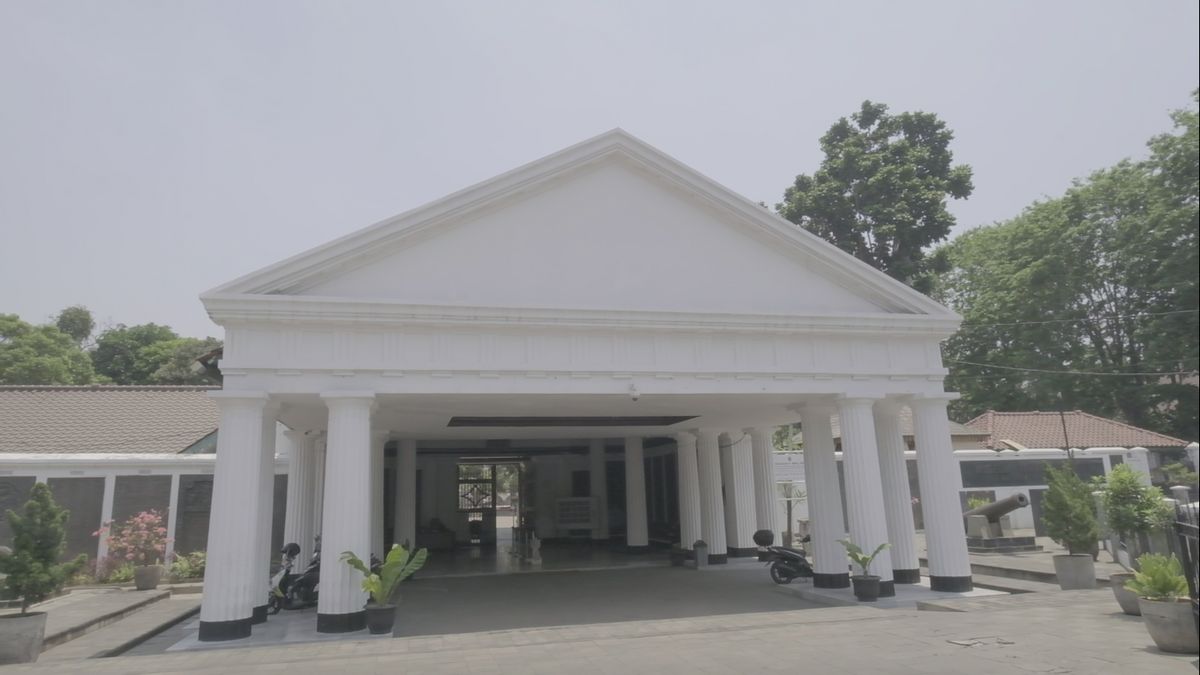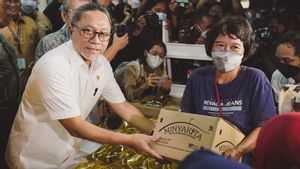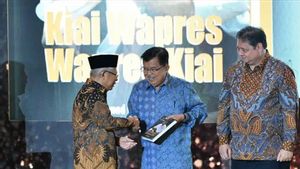JAKARTA - Tanah Abang is one of the historical areas in Jakarta. Apart from the market, this area is also known as a burial ground since the Dutch colonial era. The Dutch call this special burial ground for the Dutch (Christian) as Kerkhoflaan. A number of celebrities in Batavia were buried in Kerkhoflaan. From there the term "Terug naar Tanah Abang" became popular. The meaning is: return to Tanah Abang, enter the grave.
The presence of Kerkhoflaan in Tanah Abang was inseparable from the high mortality rate in Batavia at the end of the 18th century. Unhealthy environment is the cause. No kidding, the death rate of Europeans at that time reached 25 percent. It's so bad, it's no surprise that someone who looked fine yesterday could die the next day. As a result, the availability of graves around Oud Batavia (Kota Tua) is limited.
The Company moved fast. With all alacrity, the Company planned to make a grave garden for the new Dutch (Christians). However, the Company deliberately did not choose a location in Oud Batavia. The fear is because those who make pilgrimages have the potential to develop epidemics of scurvy, malaria, cholera, and dysentery. In short, the Tanah Abang area on the edge of Batavia was chosen as the new location.
Quoted by Nirwono Yoga and Yori Antar in the book Komedi Lenong: satire green open space (2007), the cemetery which is located at Jalan Tanah Abang I was built by the Company in 1795. The person who contributed to finding a new grave land was WV Halventius, a son of the former Governor General of the VOC, Jeremias van Rimsdijk (1775-1777). Halventius then donated 5.5 hectares of his land in Tanah Abang to the Batavia City government. Then, the era of the public cemetery garden which is also known as the Kebon Jahe Kober cemetery began.

“The location of the tomb is far from the Batavia wall, but it is strategically located, which is near Krukut River. In 1798, the VOC banned burials inside and outside churches in the city and around Portuguese churches outside the city. Starting in 1799, Batavian residents could buy or rent a grave in Kerkhoflaan. The first official burial was the burial of a seven month baby named Karel Pieter Mettenbrink, ”he wrote.
At that time, Kerkhoflaan was limited by the walls around it. The kerkhoflaan Tanah Abang became even more attractive when the owner of the power began to build several buildings. Some of the additions to the building are the main building in the form of a Doric-style hall with 18 sturdy pillars that was only built in 1844. At the back, there are two jenazar burial rooms based on gender, men on the left and women on the right.
The existence of this tomb became popular among those who visited Batavia in the early 20th century. The Dutch soldier, HCC Clockener Brousson was one of them. From the beginning of his arrival to Batavia, the Amsterdam boy spent a lot of time touring interesting places in Batavia. Uniquely, Kerkhoflaan was the location he had traveled to in Batavia.
"The lighting is quite good on the road from Rijswijkstraat to Tanah Abang. The road is a bit dark with grove of trees and branches to the right which is called kerkhoflaan, the burial place of Europeans and the garrison field behind it, "said Clockener in the book Batavia Awal 20th Century (2004).
Moving graves from the Dutch churchAlong with its development, Kerkhoflaan became famous as a public cemetery after the Governor General of the Dutch East Indies, Herman Willem Daendels (1808-1811) ordered the transfer of the center of power from Oud Batavia to Nieuw Batavia (area of the banteng field) in 1808. This relocation made all the buildings in Oud Batavia , including the Hollandsche Kerk (Dutch Church) - whose location is now being replaced by the Wayang Museum - was also destroyed.
Finally, the Hollandsche Kerk land was sold in 1829. Because of this, some of the gravestones of prominent families were sold. Some of the rest were then transferred to Kerkhoflaan. Some were installed on the outer and inner walls of the Kerkhoflaan complete with the code HK (Hollandsche Kerk) or the Dutch Church.
“The tombs were moved along with the inscriptions and tombstones. In 1844, 34 gravestones were installed on the front wall of Nieuw Kerkhof. One of the inscriptions and tombstones is the tombstone of Governor General Baron van Imhoff (1743–1750). This gravestone of van Imhoff is discussed by many historians because it contains very complex non-verbal messages, ”said Abdul Chaer in the book Tenabang Tempo Doeloe (2017).
It was used as the Taman Prasasti Museum
After Indonesia's independence, still in 1975 the DKI Jakarta Government decided to close the Kebon Jahe Kober cemetery for the construction of office buildings, inventory, and socialization. At that time, the DKI Jakarta government had evicted 4.7 hectares of burial land to become the office building of the Central Jakarta Mayor.
The remaining 1.2 hectares of graves were then rearranged the placement of the graves. Also restored. In its climax, Governor Ali Sadikin made Kerkhoflaan as the Taman Prasasti Museum in July 1977. Alwi Shahab in the book Maria van Engels: Men-in-law Habib Kwitang (2006), noted that the museum is indeed rich in collections of historical objects.
Noted, the Taman Prasasti Museum has a collection of 1,409 historical objects. The historical objects consist of the types of inscriptions in the form of headstone, obelisk, monument, trophy, replica square stone slabs, miniature, and various other forms.
“In this open inscription garden, we will find several names and figures who have been buried here. We seem to be able to feel what happened hundreds of years ago. There were educational figures, artists, scientists, spiritualists, and those who were considered warriors at that time, ”said one important figure in the writing of history in Jakarta, Alwi Shahab.
To reduce the sense of loss of Jakarta residents to the evicted Kerkhoflaan, Governor Ali Sadikin felt that turning the remaining grave land into a museum was the right step. As a form of loss, Ali wrote a sweet sentence at the inauguration of the Taman Prasasti Museum:
“In this Park, the events of all time are painted from the inscriptions of those who left. This is also embedded in the greenery we crave. Kebon Jahe Inscription Park. "
The English, Chinese, Japanese, Arabic, and French versions are automatically generated by the AI. So there may still be inaccuracies in translating, please always see Indonesian as our main language. (system supported by DigitalSiber.id)










